Regenesis Remediation Services™ – PCE Plume Treated with RegenOx®
In Situ Chemical Oxidation Reduces Contamination Concentrations at a Former Dry Cleaner Site
Regenesis Remediation Services (RRS) was contracted to design and perform in situ chemical oxidation (ISCO) via soil mixing to remediate tetrachloroethylene (PCE) impacted soil at a former dry cleaner site located in Cook County, Illinois. RegenOx® was chosen as the primary remediation technology for the chemical oxidation. The treatment area focused on soilbound PCE contamination around 1,170 mg/kg in the clay-rich unsaturated soils. The soil remediation objective was to reduce PCE levels below the 240 mg/kg soil saturation limit established by the Illinois EPA.
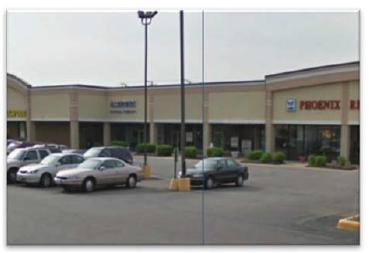
The impacted soils were removed by a mini trackhoe excavator and placed inside a vacant unit adjacent to a treatment cell where the soil mixing was performed. A proportional amount of RegenOx was evenly dispersed throughout the excavated, contaminated soil, then thoroughly mixed using the excavator. Once mixing was complete, the soils were placed back into
the treatment cell while being hydrated with a RegenOx solution.
By optimizing the contact between the soil, contaminants, and RegenOx, powerful desorption effects strip PCE off of the soil matrix and onto the RegenOx catalytic surface. This catalytic surface contributes to localized free-radical generation, leading to focused and efficient contaminant destruction. Approximately 242 cubic yards of soil bound contaminant mass was successfully treated at this site. Soil mixing was performed from surface grade to approximately 10 feet below grade.
Regenesis Remediation Services™ – LNAPL Recovery at an Active Gas Station
Combined Treatment Remedies Reduce Contamination Concentrations at Michigan Service Station
Regenesis Remediation Services (RRS) was contracted to remediate a residual LNAPL and dissolved-phase petroleum plume from historic gasoline and diesel fuel releases at an active service station. RegenOx PetroCleanze™ (PetroCleanze) was chosen as the primary remediation technology to facilitate the recovery of residual LNAPL and chemically oxidize contaminants without negatively impacting sensitive infrastructure.
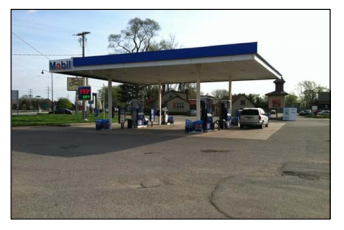
The design called for three (3) application events using PetroCleanze, with Oxygen Release Compound (ORC®) Advanced applied during the final application event in a down-gradient plume cut- off barrier, to promote the enhanced aerobic biodegradation of dissolved-phase petroleum hydrocarbons. Eight (8) injection/extraction wells and 28 direct-push technology (DPT) injection points were used to apply the remediation reagents in the silty-sand aquifer and smear zone. Vacuum extraction was conducted between PetroCleanze applications to recover residual freephase petroleum hydrocarbons liberated from the soils. Reagent distribution monitoring confirmed PetroCleanze was present throughout the targeted source area during each application event.
Prior to the first PetroCleanze application event, no measurable free product was observed at this site since 2006. Less than twenty-four hours after the first PetroCleanze application event, LNAPL up to three inches thick was observed in four of the eight wells. After completing the third application and extraction event, LNAPL was not observed in any wells on site, and BTEX concentrations in groundwater were showing reductions for the first time since the fuel releases first occurred. A total of 2,160 pounds of RegenOx PetroCleanze and 1,120 lbs. of ORC Advanced were injected.
Regenesis Remediation Services™ – LNAPL Recovery & In Situ Chemical Oxidation
Combined Treatment Remedies Reduce Contamination Concentrations at a Former Service Station
Regenesis Remediation Services (RRS) was contracted to remediate a dissolved-phase and residual LNAPL petroleum hydrocarbon plume resulting from historic petroleum fuel releases at a former service station. RegenOx® PetroCleanze™ (PetroCleanze) was chosen as the primary remediation technology in addition to Oxygen Release Compound (ORC®) Advanced, to facilitate recovery of residual LNAPL and chemically oxidize contaminants without negatively impacting sensitive infrastructure. ORC Advanced was applied during the second PetroCleanze application to promote the enhanced aerobic bioremediation of dissolved phase petroleum hydrocarbons.
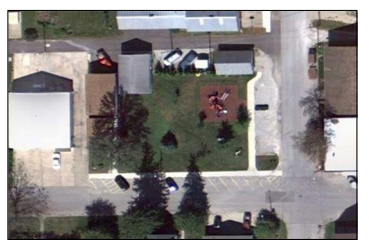
Eighteen direct-push injection points were used to apply the reagents in the silty sand aquifer and saturated soil over the course of two application events. Vacuum extraction was conducted after each PetroCleanze application to recover residual free-phase petroleum hydrocarbons liberated from the soils. Reagent distribution monitoring during the application events confirmed PetroCleanze was present across the targeted source area. Remediation chemistry was applied via direct-push injection points with a bottom-up approach from 5 to 15 feet below ground surface (bgs). A total of 4,470 pounds (lbs.) of RegenOx PetroCleanze and 720 lbs. of ORC Advanced were injected throughout the course of the two applications.
Regenesis Remediation Services™ – LNAPL Recovery with RegenOx®
Remediation of Residual LNAPL and a Dissolved-Phase Plume at a Former Gasoline Service Station
Regenesis Remediation Services (RRS) was contracted to remediate a residual LNAPL and dissolved phase petroleum plume from a historic fuel release at this former gasoline service station. RegenOx PetroCleanze™ (PetroCleanze) was chosen as the primary remediation technology to facilitate recovery of residual LNAPL and chemically oxidize contaminants without negatively impacting sensitive infrastructure.
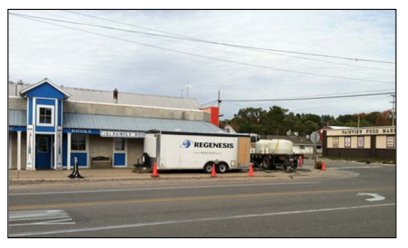
Twenty-six (26) direct-push injection points were used during each of the four (4) application events to apply the remediation chemistry in the sandysilt aquifer and smear zone soils. Vacuum extraction was conducted after each PetroCleanze application to recover residual free-phase petroleum hydrocarbons liberated from the soils. Reagent distribution monitoring confirmed PetroCleanze was present across the targeted source area during each application event. Direct-push injection points were advanced using a bottom-up approach between 25 and 20 feet below ground surface (bgs). The injection interval focused on the highest concentrations of contaminants identified in the upper saturated soils and smear zone soils. A total of 13,230 pounds of PetroCleanze were injected via DPT injection points over the course of the project with low pressures and moderate flow rates.
Regenesis Remediation Services™ – PersulfOx® Treats Petroleum Hydrocarbons
In Situ Chemical Oxidation and Enhanced Aerobic Biodegradation Remediate Underground Storage Tank Site
Regenesis Remediation Services (RRS) was contracted to design and implement an in situ chemical oxidation (ISCO) treatment plan to remediate a diesel gas plume from a former leaking underground storage tank (UST) on a residential farm property. The defined treatment area comprised approximately 5,280 square feet (ft2), and the treatment of the gas plume included three application events using
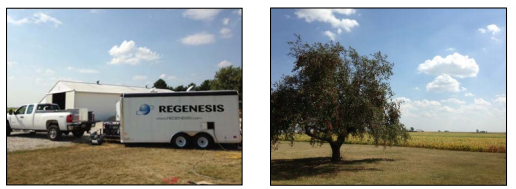
PersulfOx®, with the final application immediately followed by an application with Oxygen Release Compound Advanced (ORC® Advanced). A total of 5,840.6 pounds of PersulfOx and 2,589 pounds of ORC Advanced were injected during the course of the project.
Utilizing PersulfOx remediation chemistry to distribute throughout the subsurface, 91 direct-push injection technology (DPT) injection points were advanced every 100 ft2 over the course of three application events. ORC-A was applied in 53 discrete DPT injection points approximately every 100 ft2. RRS utilized both expendable points and retractable screen-tip injection tooling to apply the PersulfOx and ORC Advanced at discrete intervals across the vertical treatment interval from 8 to 12 feet and 8 to 16 feet below ground surface (bgs) within the sandy saturated soils. Low pressures and moderate application rates were utilized to apply the remediation chemistry at up to four (4) injection point locations simultaneously. RRS personnel performed real-time reagent distribution diagnostics to optimize the distribution of the material.
Redeveloped DOD Site Treated with Turn-Key ISCO Remediation
PersulfOx® Applied at Four Locations on Former Air Force Base in Ohio
Project Highlights
- RRS applied PersulfOx in four separate areas of this former air base, including the parking lot of an active business ensuring litlle disturbance to the commercial operation
- RRS was able to redesign the project from the field achieving maximum injection without downtime and cost over-runs
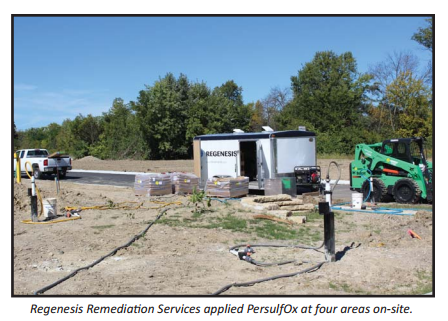
Project Summary
Regenesis Remediation Services (RRS) was contracted to remediate this former DOD facility. Perchlorethene (PCE) levels of 400 ppb were treated with in situ chemical oxidation (ISCO) employing PersulfOx Catalyzed Persulfate technology. The application included two injection events which involved working within an active parking area of an operating business. The original site design included utilizing direct-push injections, but RRS readjusted the plan in the field after product surfacing was observed in one area that was under construction. Despite the redesign, the application was completed ahead of schedule and under budget
Remediation Approach
Two injection events included the application of 50,000 pounds of PersulfOx through 85 injection points per event in a grid design with treatment 18-31 feet below ground surface. RRS had initially designed the project to use only direct-push injection points. But after surfacing was witnessed, RRS redesigned the project to include the installation of five injection wells.
Technology Description
PersulfOx is a sodium persulfate-based chemical oxidation technology which destroys both hydrocarbon and chlorinated solvent-type contaminants in the subsurface. PersulfOx contains a built-in catalyst which activates the persulfate component and generates contaminant-destroying free radicals without the need for the addition of a separate activator.
Regenesis Remediation Services™ – TCE Plume Treated with 3-D Microemulsion®
Combined Treatment Remedies Reduce Contamination Concentrations at Wisconsin Manufacturing Facility
Regenesis Remediation Services (RRS) was contracted to design and implement an in situ enhanced reductive dechlorination (ERD) remediation plan for this manufacturing site, impacted by trichloroethylene (TCE). The treatment included the use of 3-D Microemulsion® and Chemical Reducing Solution (CRS®) as controlled-release electron donors, and BDI® Plus to bioaugment the subsurface. The two treatment areas at this former manufacturing facility covered an area of 35,000 square feet (ft2). A total of 19,200 pounds of 3-D Microemulsion, 2,400 lbs. of CRS, and 48 liters of BDI Plus with over 1011 Dehalococcoides (DHC) cells per liter were injected over a period of less than two weeks on site.
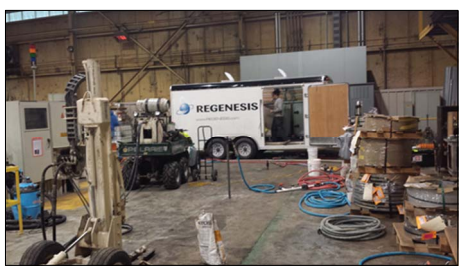
Thirty-nine direct-push injection points were advanced between both of the treatment areas. RRS utilized retractable screen tip injection tooling to apply the pH neutral 3-D Microemulsion with CRS and BDI Plus at discrete intervals in the vertical treatment intervals of 5 to 20 feet below ground surface (bgs) and 15 to 30 feet bgs. The RRS trailer and equipment configuration allowed for low pressure application of the remediation chemistry at up to three injection points simultaneously. Remediation chemistry was applied up to 100 feet from the trailer in subfreezing temperatures while RRS personnel monitored flow rates and injection pressures at each application point to optimize distribution and influence of the remediation chemistry.
Regenesis Remediation Services™ – PCE Plume Treated with 3-D Microemulsion®
Enhanced Reductive Dechlorination & Bioaugmentation Used to Remediate Chlorinated Solvents at a Brownfield Site
A real estate developer and their environmental consultant selected RRS to design and implement an in situ enhanced reductive dechlorination (ERD) remediation plan for this Brownfield site originally developed in the 1890s, called Belknap Crossings. The site was impacted by two groundwater plumes averaging 300 ug/L trichloroethylene (TCE). The remediation design included the use of 3-D Microemulsion® as a controlled-release electron donor and bioaugmentation using BDI® Plus. The two TCE plumes at this
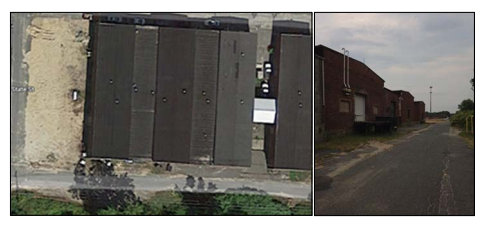
former manufacturing facility covered an area of 58,000 square feet (ft2). A total of 26,000 pounds of 3-D Microemulsion and 22 liters of BDI Plus with over 1011 Dehalococcoides (DHC) cells per liter were injected over a period of less than two weeks on site.
Taking advantage of 3-D Microemulsion’s unique subsurface distribution characteristics, direct-push injection points were advanced every 480 ft2. RRS utilized retractable screen-tip injection tooling to apply the pH neutral 3-D Microemulsion with BDI Plus at discrete intervals across the vertical treatment interval from 24 feet below ground surface (bgs) to 34 feet bgs in a bottom-up approach. The RRS trailer and equipment configuration allowed for low pressure application of the remediation chemistry at up to three injection points simultaneously, up to 200 feet from the trailer while monitoring flow rates and injection pressures at each application point.
Regenesis Remediation Services™ – PCE Plume Treated with 3-D Microemulsion®
Combined Treatment Remedies Used to Reductively Dechlorinate Contamination at Former Dry Cleaners Site
Regenesis Remediation Services (RRS) was contracted to design and implement the treatment of groundwater contaminated by residual chlorinated volatile organic compounds (cVOCs) at this former dry cleaner site. The design included the use of 3-D Microemulsion® as a controlledrelease electron donor and bioaugmentation using BDI® Plus. The treatment area covered approximately 600 square feet (ft2), and a total of 800 pounds of 3-D Microemulsion and 18 liters of BDI Plus with over 1011 (Dehalococcoides) DHC cells per liter were injected throughout the treatment area in one day of work.
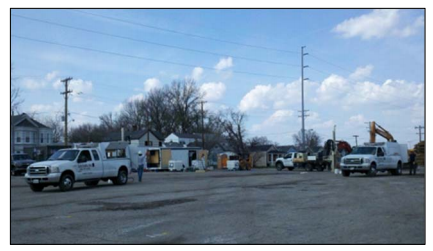
Taking advantage of 3-D Microemulsion’s unique ability to distribute in the subsurface via micellar movement, twelve direct-push injection points were advanced every 50 ft2. RRS utilized retractable screen-tip injection tooling to apply the pH neutral 3-D Microemulsion with BDI Plus at discrete intervals across the injection vertical treatment interval from 6 to 13 feet below ground surface (bgs). The RRS trailer and equipment configuration allowed for low pressure application of the remediation chemistry while monitoring flow rates, reagent distribution, and injection pressures at each application point.
Regenesis Remediation Services™ – TCE Plume Treated with 3-D Microemulsion®
Enhanced Reductive Dechlorination & Bioaugmentation Used to Remediate Chlorinated Solvents at a Brownfield Site
A real estate developer and their environmental consultant selected RRS to design and implement an in situ enhanced reductive dechlorination (ERD) remediation plan for this Brownfield site originally developed in the 1890s, called Belknap Crossings. The site was impacted by two groundwater plumes averaging 300 ug/L trichloroethylene (TCE). The remediation design included the use of 3-D Microemulsion® as a controlled-release electron donor and
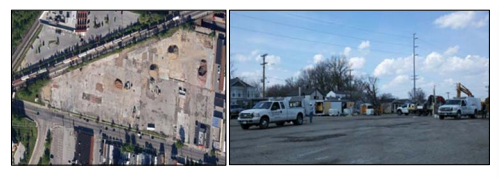
bioaugmentation using BDI® Plus. The two TCE plumes at this former manufacturing facility covered an area of 58,000 square feet (ft2). A total of 26,000 pounds of 3-D Microemulsion and 22 liters of BDI Plus with over 1011 Dehalococcoides (DHC) cells per liter were injected over a period of less than two weeks on site.
Taking advantage of 3-D Microemulsion’s unique subsurface distribution characteristics, direct-push injection points were advanced every 480 ft2. RRS utilized retractable screen-tip injection tooling to apply the pH neutral 3-D Microemulsion with BDI Plus at discrete intervals across the vertical treatment interval from 24 feet below ground surface (bgs) to 34 feet bgs in a bottom-up approach. The RRS trailer and equipment configuration allowed for low pressure application of the remediation chemistry at up to three injection points simultaneously, up to 200 feet from the trailer while monitoring flow rates and injection pressures at each application point.

 Americas
Americas Europe
Europe Français
Français Deutsch
Deutsch Italiano
Italiano Español
Español

